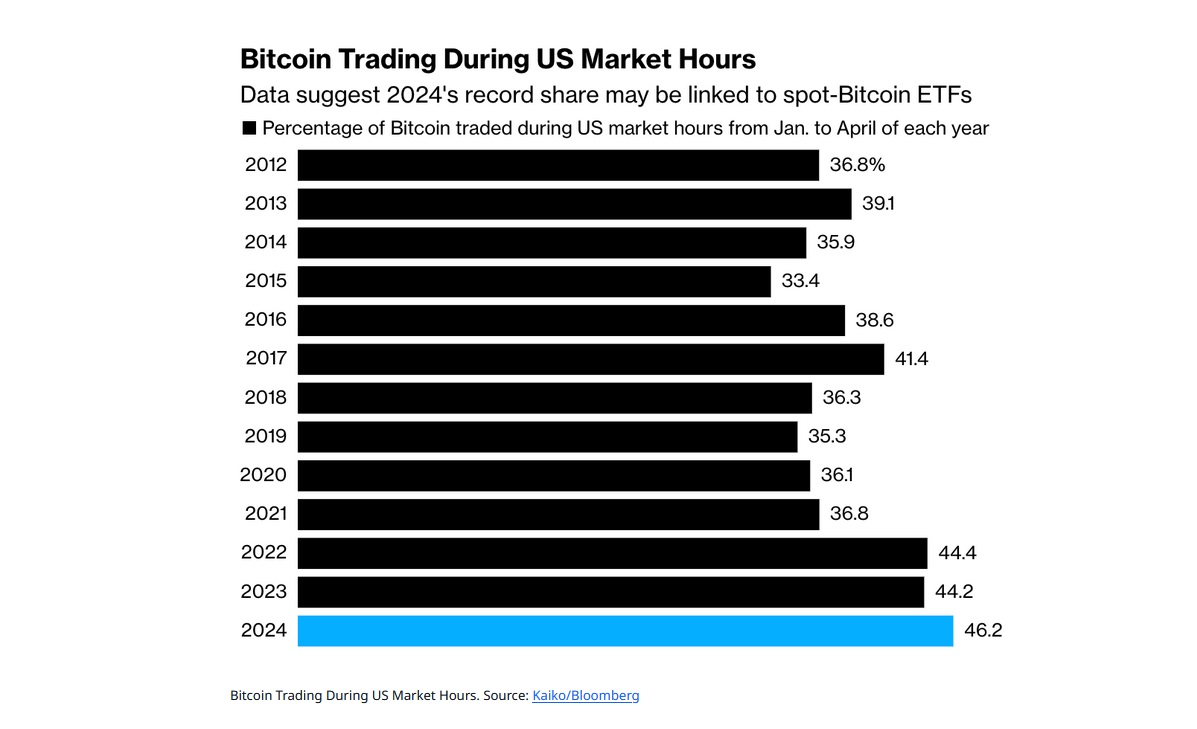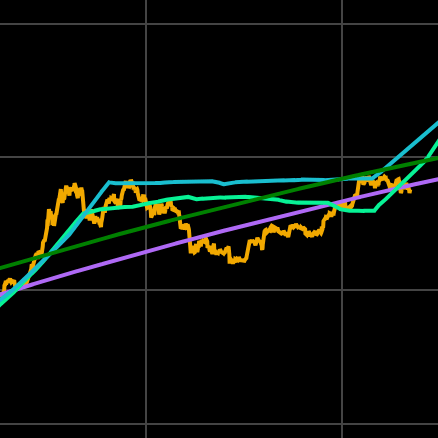
Key Takeaways
- Bitcoin trading during US market hours surged to 46% of this year's cumulative volume.
- Spot-Bitcoin ETFs launched in January attracted nearly $13 billion in net inflows.
- Bitcoin's performance during US hours shows muted volatility, indicating its growing correlation with the S&P 500.
Bitcoin trading during US market hours has surged, accounting for 46% of this year’s cumulative volume from January to April.
According to Kaiko, this increase is closely linked to the January launch of spot-Bitcoin exchange-traded funds (ETFs), which have attracted nearly $13 billion in net inflows.
$13 billion inflows from Spot-Bitcoin ETFs
The introduction of spot-Bitcoin ETFs in January significantly impacted trading volumes.
Kaiko Research highlighted that Bitcoin trading spikes at the beginning and close of US trading hours, correlating with the calculation of net asset values for the ETFs each weekday.
Thursdays contribute nearly 15% of the cumulative daily volume.
US trading volume surpasses Asian markets
While US trading volumes have rebounded to 2022 levels, Bitcoin trading during Asian hours remains lower.
Toby Winterflood, Chief Product Officer of CCData, noted:
That literally shows you the impact that these ETFs have had, not only on Bitcoin’s correlation with the S&P but also its potential de-correlation with other altcoins.
Muted volatility reflects growing maturity
Bitcoin’s performance during US hours shows muted volatility, indicating its growing correlation with the S&P 500.
Despite demand slowing with a net $1.3 billion inflow in May, the pace has picked up recently with a cumulative net flow of $542.9 million in the past two days.
A report by Hashkey highlights that Bitcoin returned five times the S&P 500 from January to April 2024, delivering a 57% return year-to-date compared to the S&P 500’s 12.20%.




